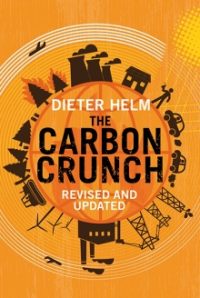Digitalization: The Deadly Threat to Fossil Fuels
Dieter Helm—
Decarbonization should eventually bring about the end of fossil fuels, but they face a much more immediate threat. That threat is digitalization. Everything digital is electric. The future of energy is therefore electric too.
Whilst there are some people who think that the impact of the communications revolution has run its course, and that the growth prospects are now poor, the opposite is a much more compelling scenario. The line that the revolution has already run its course, and the future is one of low economic growth and low productivity is a lazy assumption, and has little evidence to support it.
Technical revolutions in the past have taken many decades to pan out. It took railways half a century to realize the bringing of markets within the range of distant producers. Similarly it took over half a century for electricity to transform industry and households, and indeed a century later it is still causing aftershocks. The Internet has only had a couple of decades to work its magic. As recently as the early 1980s, typewriters still ruled the roost in offices.
Think forward a couple more decades. There will be robots doing lots of things that now rely on oil. Think of cars, a key part of the demand for oil. 3D printing holds out not just the closing of the gap between consumers and producers, cutting into the need for globalization and all its energy costs. Digital delivery to the final point of consumption may also cut into transport. Then there is the promise of Artificial Intelligence (AI), cutting a swath through the middle class professions. Add in the marriage of digitalization, genetics and the biological sciences, and quantum computing to get a sense of the disruption to come.
We obviously don’t know how all this will play out with precision. But these technologies cannot be un-invented. What is very surprising is that no one appears to have thought through what all this means for the energy industries in general and the fossil fuels in particular. The fixation with climate change has dominated this much more immediate transformation.
An electric world is one that will see the gradual displacement of the fossil fuels, starting with oil. Transport is the first target, with electric vehicles already cutting away at the diesel and petrol engines faster than many anticipated. The investments in new electric models, new batteries and new charging networks are regularly in the news. The car industry knows the direction of travel: it is just a question of time.
As with many technological switches, there are tipping points. It happened with trains and cars and electricity. Critical mass requires enough people to believe that enough people believe that the future is electric cars. A cascade of investments then comes together: the electricity charging networks; the batteries; and the cars themselves. Add governments keen to get in on the act, and regulators allowing protection for the costs of network roll outs, and a switch point happens. It is often only afterwards that we realise that it has happened.
Oil will get squeezed in transport. Its other big market is petrochemicals. Many oil company executives might feel safer here. It may take a bit longer, but there is nothing in the laws of nature that says that the petrochemicals that have dominated the last half-century will carry on indefinitely. They face a combination of challenges: new materials; convergences with bio-sciences; powders and gels for 3D printing; and robotics enhancing efficiencies. Think graphene, nano-technologies and bio-products. These are less immediate that electric cars, but should not to be discounted.
After oil comes gas. Gas is the short term winner because it is good at generating electricity. It has come from nowhere to be the fossil fuel of choice in many parts of the world for generation in just two and half decades. It was illegal to burn gas in power stations in the US and Europe until 1990. It is no longer a premium fuel for the petrochemical industry: it is abundant and cheap, especially after shale gas came along.
The oil to gas switch is the second part of the end game for the fossil fuels. Gas’ future is challenged only by coal and by other ways of generating electricity. It has little to fear from nuclear for a couple of decades at least.
Coal has a lot going for it. It is widely distributed and can be stocked. There are therefore few security of supply problems. It is super-abundant and cheap, provided the power stations are close to the coalfields. Its Achilles Heel is that it is very very dirty, compared to gas. Coal is lethal: lethal to the coal miners; and lethal to those who breathe in the pollution from burning it. Coal mines pollute waterways, ground water and leak methane. Compared with fracked gas, it is off the scale for awfulness.
These are the reasons Europeans, the Chinese and even the US are bearing down on coal generation, notwithstanding Trump’s pro-coal rhetoric. The Beijing Olympics brought home the health disaster in China, but others are suffering too. Combine the dangerous particles from diesel engines with the coal smog, and the toxic cocktail points against coal.
Coal will come under continued pressure from an air quality perspective. Gas is relatively benign in comparison. Coal’s related problem is that it cannot escape its carbon footprint, which is twice that of gas. For this reason, the burden of decarbonization should, and in some cases is, bearing down on coal.
Both gas and coal are threatened by renewables. Ultimately the ambition is to have a digitalised world powered by electricity that is low carbon. Current renewables have, contrary to all their lobbyists’ claims, made no serious impact on climate change, nor are they likely to for some time to come. The subsidies to intermittent wind and solar have disrupted the economics of gas-fired power stations, but this is because the former have been heavily subsidised and don’t have to pay for the system costs they cause.
Digitalisation will play its role here too. The future renewables technologies look much better than the current ones, and they will be digitally provided. Opening up the light spectrum and developing new applications like solar film are no longer the dreams of theoretical scientists. They are beginning to move out of the labs. Applied to smart networks and digitally controlled factories and buildings, they are part of a step change in efficiency and hence a dent in demand is on its way.
Energy is ultimately a derived demand. We want energy not for itself but what it can do for us. What matters for future demand is how that energy is delivered. In our digital future it will increasingly as electricity and that will come partly from gas in the short run, but form the next generation of renewables after that.
Oil is the big early loser. All those confident oil demand forecasts from the IEA and the oil companies look shaky in a digital world. And with them all those confident forecasts of rising oil prices. $50 a barrel oil prices are high even on the current technologies. They look very high as the oil market is gradually cut away. New digital technologies are more likely to cause a gradual and continual fall in oil prices – with all the geopolitical consequences that will bring. The Saudis and the Russian should think hard about how they can sustain their economies in this harsher world for the fossil fuels.
This post originally appeared on the Yale University Press London blog.
Dieter Helm is fellow in economics, New College, Oxford. He is also professor of energy policy and professorial research fellow, Smith School of Enterprise and the Environment, University of Oxford.
Further reading:






























